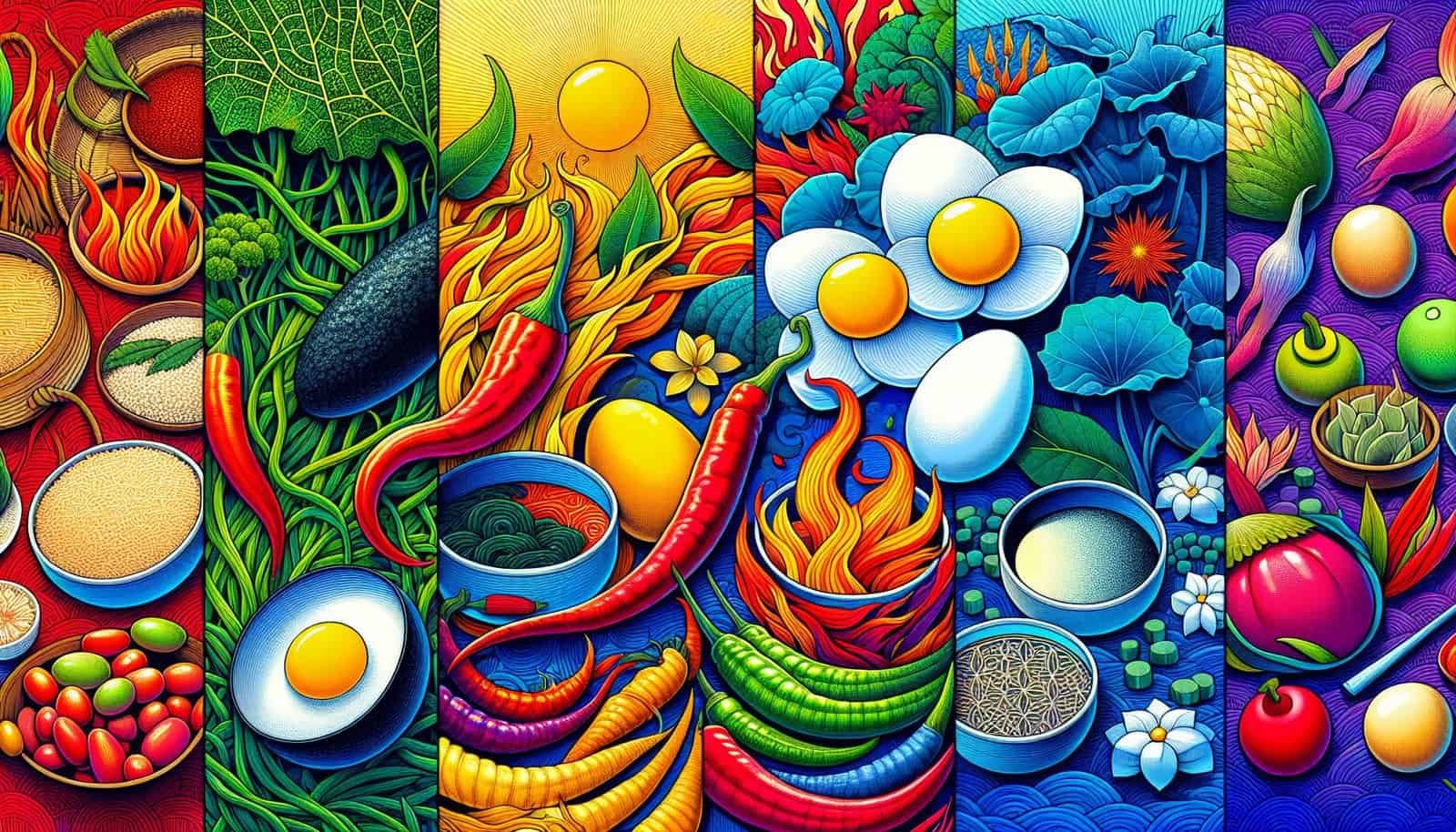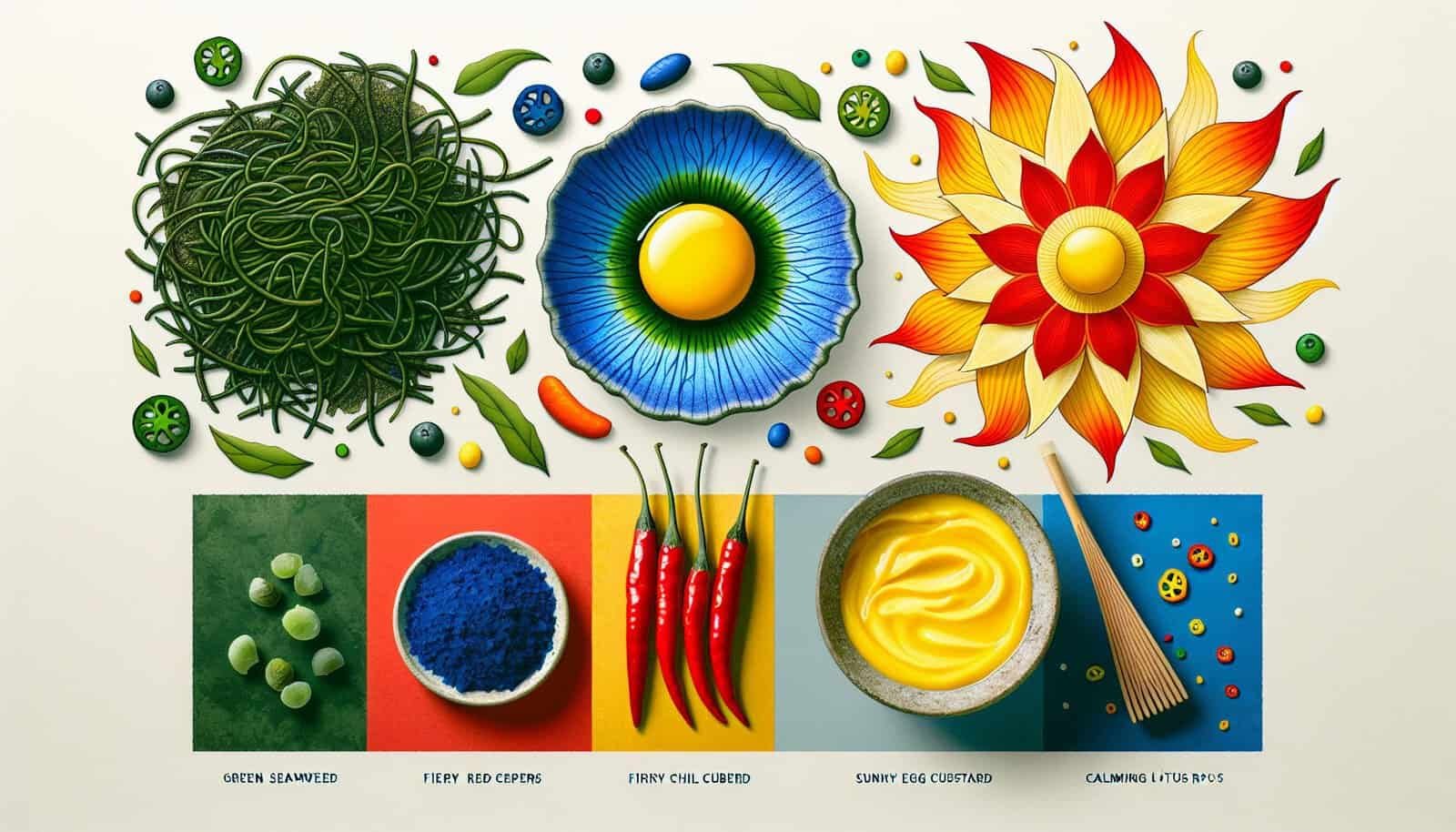In the world of Korean cuisine, colors hold deep symbolic meanings. From the vibrant reds to the calming greens, each hue represents a specific aspect of the culture and history that has shaped this culinary tradition. By understanding the significance behind these colors, you can gain a greater appreciation for the rich tapestry of flavors and stories woven into every dish. So, prepare to embark on a gastronomic journey as we explore the fascinating symbolism of colors in Korean cuisine.
The Symbolism of Colors in Korean Cuisine
Korean cuisine is known for its vibrant and diverse colors, each representing different meanings and symbolisms. From fiery reds to calming blues, the colors used in Korean dishes hold significance beyond just aesthetics. Understanding the symbolism of colors in Korean cuisine allows us to appreciate not only the visual appeal of the dishes but also the cultural values and beliefs associated with them. Let’s explore the rich symbolisms behind the various colors commonly found in Korean cuisine.

Red: Fire, Passion, and Good Fortune
The color red holds deep cultural significance in Korean cuisine. It is often associated with fire, passion, and good fortune. Red chili peppers, commonly used in many Korean dishes, are not only responsible for adding a fiery kick but also bring about a sense of vitality and passion. In Korean culture, red is also believed to ward off evil spirits and bring good luck. Red ingredients such as gochujang (fermented chili pepper paste) and kimchi (spicy fermented vegetables) reflect the zest for life and the energetic nature of Korean cuisine.
Yellow: Royalty and Wealth
In Korean cuisine, the color yellow represents royalty and wealth. Historically, yellow was associated with the Korean royal family and was considered a symbol of power and prosperity. Dishes that incorporate yellow ingredients or garnishes, such as golden yellow persimmons, yellow bell peppers, or even the vibrant yellow omelette in bibimbap (a mixed rice dish), pay homage to this regal symbolism. The color yellow evokes a sense of luxury and abundance, reflecting the rich culinary heritage of Korea.
Green: Nature and Freshness
Green, symbolizing nature and freshness, plays a vital role in Korean cuisine. With an emphasis on seasonal and locally sourced ingredients, Korean dishes often feature an array of green vegetables and herbs. From vibrant spinach to crisp lettuce, these greens not only add visual appeal to the dishes but also represent the importance of natural ingredients and healthful eating. Green ingredients are often associated with vitality, rejuvenation, and the nourishing qualities of Korean cuisine.
Blue: Serenity and Tranquility
While not as commonly seen, the color blue holds a significant place in Korean cuisine, symbolizing serenity and tranquility. Blue is often used to represent water, with dishes like Daegu Maeuntang (spicy fish stew) featuring a blue-hued broth. This color is believed to bring about a sense of calmness and peacefulness, reflecting the harmony between nature and food. The presence of blue in Korean dishes reminds us to appreciate the soothing and meditative qualities of a balanced meal.

Black: Elegance and Mystery
Black, often associated with elegance and mystery, can be found in certain Korean dishes. Ingredients such as black sesame seeds or black garlic lend a unique flavor and a touch of darkness to the cuisine. The color black represents sophistication, depth, and a sense of allure. Its presence in Korean dishes reminds us to appreciate the complexity and intrigue that lies within Korean culinary traditions.
White: Purity and Cleanliness
In Korean cuisine, white symbolizes purity and cleanliness. Many traditional Korean dishes emphasize the beauty of simplicity, often using white ingredients to represent purity. White rice, tofu, and white radishes are commonly used, signifying the importance of clean and unadulterated flavors. White is also associated with new beginnings and fresh starts, reflecting the desire for a clean slate in each meal.

Purple: Spirituality and Nobility
Purple, representing spirituality and nobility, can be found in some Korean dishes. Ingredients like purple sweet potatoes or purple perilla leaves add a touch of regality and depth to the cuisine. Purple has long been associated with kings and nobles in Korean history, symbolizing their elevated status. Its presence in modern Korean cuisine reflects a connection to the past and a reverence for tradition.
Pink: Love and Femininity
Pink, often associated with love and femininity, is not as prevalent in Korean cuisine but can be seen in certain dishes and desserts. Ingredients such as pink pickled radishes or pink rice cakes (tteok) are visually appealing and add a touch of sweetness to the culinary experience. Pink represents affection, care, and the celebration of love. Its presence in Korean dishes reminds us of the importance of nourishing not only our bodies but also our emotional well-being.

Orange: Energy and Vitality
Orange, symbolizing energy and vitality, can be found in Korean cuisine in various forms. Ingredients like orange pumpkins, carrots, or persimmons evoke a sense of warmth, vibrancy, and liveliness. Orange is believed to boost energy levels and stimulate the appetite. Its presence in Korean dishes reflects the importance of nourishing not only the body but also the spirit, providing a burst of vitality to each meal.
Brown: Earthiness and Nourishment
Brown, representing earthiness and nourishment, plays a crucial role in Korean cuisine. Many staple ingredients like soybean paste (doenjang) or fermented soybean stew (jjigae) feature a rich brown color. Brown symbolizes the grounding and nurturing qualities of the earth, reminding us of the fundamental role food plays in sustaining life. Its presence in Korean dishes reflects a deep-rooted connection to the land and an appreciation for the nourishing properties of traditional Korean cuisine.
Understanding the symbolism of colors in Korean cuisine not only enhances our appreciation of the visual aspect but also provides insights into Korean culture and values. The vibrant hues found in various dishes reflect the rich history and traditions of Korean cuisine, showcasing the importance of balance, harmony, and the celebration of nature. So the next time you indulge in a delicious Korean meal, take a moment to savor not only the flavors but also the symbolic meanings behind the colors on your plate.

